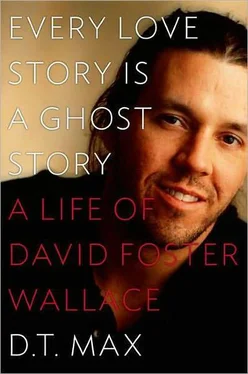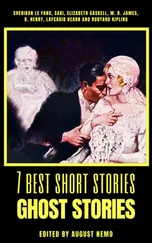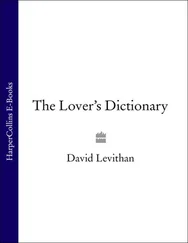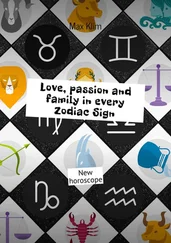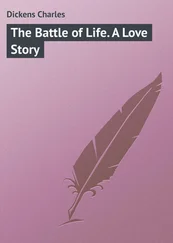But the review’s author, Caryn James, didn’t like the ending of the book, in which a “tortured running joke turns into a contrived explanation and characters we expect to appear never show up.” Other reviewers filed in in similar fashion: exuberant versus sloppy, homage versus theft. Wallace was particularly hurt by the review in the daily New York Times by Michiko Kakutani. Many first-time authors would have been excited to be written up by a critic known for spotting young talent. Her praise of Wallace’s “rich reserves of ambition and imagination” was flattering, to be sure, but Wallace told a friend he hid in his room for two days and cried after reading yet another paragraph devoted to parallels between his first book and Pynchon’s most popular novel. “I didn’t think the review was all that favorable,” Wallace wrote Howard afterward. “But if you and Bonnie think it’s nice, I’m more than happy to see it that way.” To Howard he noted in general that the reviews had him “kind of down.”
A film company, Alliance Entertainment, optioned the book for $10,000. There was talk that Terry Gilliam, famous for the near-future satire Brazil , a movie Wallace had loved, might want to direct it. Wallace took a try at writing a treatment in the winter of 1987, simplifying the plot and minimizing the philosophical underpinnings. The story, he wrote in the précis, “is one not only about coming of age, but also about romantic love, and familial love, and the reconciliation of the heroine’s present with her past, and how these three sub-elements relate to the process of ‘growing up’ in particular and being a person in general.” “Bonnie,” he wrote, “I’ve never had more difficulty and less fun working on anything in my life. This project is dead to me, and my head is full of fiction.” He joked that if she would write the screenplay she could have the money.
For all the misgivings and the mixed reviews, Broom made its mark. A consensus among critics emerged that Wallace was a writer worth paying attention to, if for no other reason than as a corrective to the literary brat pack of Bret Easton Ellis, Jay McInerney, as well as the short-story writer Tama Janowitz. Some readers may even have seen the “portent” Howard did, the emergence of a new, youthful self-questioning sensibility. Penguin printed fourteen thousand copies of the paperback and went back to press for more. One indication of the book’s standing was that the Wall Street Journal ran a short profile of Wallace entitled “A Whiz Kid and His Wacky First Novel.” “You would think that a brilliant young man who had produced his first novel before commencement would forgo more classes, but this one is not only well-educated, he is smart,” the writer began. Wallace responded to Nadell, “Nice, in a condescending way. I kept getting the impression that my hair was being affectionately ruffled by an elderly relative.”
Another sign of the growing interest in Wallace’s writing that spring was an invitation to participate in a reading at the West Side Y in Manhattan. Other authors reading that night would be T. C. Boyle, Laurie Colwin, and Frank Conroy. Wallace had never performed at such a large or important gathering, and thinking about it terrified him. “I’m so nervous about the reading,” he wrote Nadell just beforehand, “I can hardly breathe.” The night of the event he went to a dinner with the other authors at a Chinese restaurant in the west 60s. He quietly excused himself several times to throw up in the bathroom.
At the theater, the writers read in alphabetical order, so Wallace’s nervousness had time to swell, as Gerry Howard looked on with worry. Finally Wallace’s turn came. Howard introduced him, Wallace stood up on the stage, very slowly poured himself a glass of water, took a sip, put it down, and, smacking his lips, said, “Aaaah.” “You know,” he told the audience, “I always wanted to do that.” Peals of laughter. Wallace opened the book and read one of the stories within a story that Rick Vigorous tells to Lenore, in which a child’s crying unleashes a chain of improbable, catastrophic events. The audience loved the bravura homage to and parody of John Irving and sensed the young writer’s charisma, participating in the pleasure he took in having surmounted his own anxiety. Howard thought the performance was “maybe the best reading I’ve ever seen.” A Penguin publicist wrote Nadell a few days afterward to assure her she had nothing to worry about. For his part, Wallace wondered what had gone on. “The reading went really well,” he reported to Nadell, “and I had a marvelous time on stage (a bit disturbing).” 24
As Wallace began his last semester at Arizona, things between him and Gale Walden reached a breaking point. School would end soon and what was ahead was blank. Wallace wasn’t clear on what he wanted, unless it was to be left alone — except when he didn’t. He drank and got high a lot, which was helpful in keeping Walden at a distance. They decided to get married — Walden says Wallace wanted to elope — but by late spring it was clear no wedding was going to take place. “I guess the engagement is more or less off,” he wrote to Nadell in mid-April, whatever relief he felt buried under a sense of being wronged; “it’s hard to be engaged to someone who won’t speak to you.”
Weighing Wallace down was the growing certainty that he would soon be a professional writing teacher. Income from Broom , he knew, would not support even his modest needs. “Writing means teaching,” he told anyone who would listen. But if he needed to teach, the past year had also taught him to be careful how much. Dale Peterson at Amherst held out the prospect of a part-time engagement. Wallace was interested; he had turned down a tenure-track job offer from Northwestern (or so he wrote Peterson, though the school has no record of it and it seems unlikely). The prospect of being back where Broom had unscrolled held special appeal. “Could you give me a general idea about the whole thing’s modal status?” he followed up in the spring. Peterson said to be patient; it would take time to get his protégé the appointment.
In April Wallace was the subject of a profile in Arrival , a small glossy magazine based in Berkeley. The article, written by a friend of Nadell’s, carried a photo of Wallace in a saguaro cactus — dotted desert, dressed in jeans and a checked button shirt. His arms dangled loosely, as if ready to grab his gun. “Hang ’Im High” was the title. Clearly, there was a new sheriff in FictionTown, USA. In the article, Wallace made evident his disdain for the workshop writing he had spent the past two years battling. “I’m not interested in fiction that’s only worried about capturing reality in an artful way,” he asserted. “What pisses me off about so much fiction these days is that it’s just boring.”
Alongside the profile, Arrival published a sample of Wallace’s work, the story “Lyndon,” a fictionalized biography of the thirty-sixth American president in the style of Robert Coover’s 1977 novel The Public Burning , which Wallace had read shortly before. Wallace fabricated an aide to LBJ named David Boyd and gave him a male lover, anachronistically dying of AIDS, and indeed the challenges of love — theirs for each other, Lady Bird’s for LBJ, strangers’ for a public figure — form the creative core of the story. “I never saw a man with a deeper need to be loved than LBJ,” an aide comments.
“Lyndon” was noteworthy for its tight control of tone and careful observation, some of it gleaned from books and another portion borrowed from JT, whose mother had had a friend in the administration. What was also noticeable was that Wallace’s characteristic manic quality was again tamped down. As with “Little Expressionless Animals,” it was as if a newer, more serious writer had entered the room. Pynchon as model was being replaced or at least added to. In a later interview, Wallace would credit the movie Blue Velvet , the offbeat noir film by David Lynch, for this new poise. He had seen the film several times and found it revelatory, so much so that he brought it up in an interview he gave nearly a decade later:
Читать дальше
